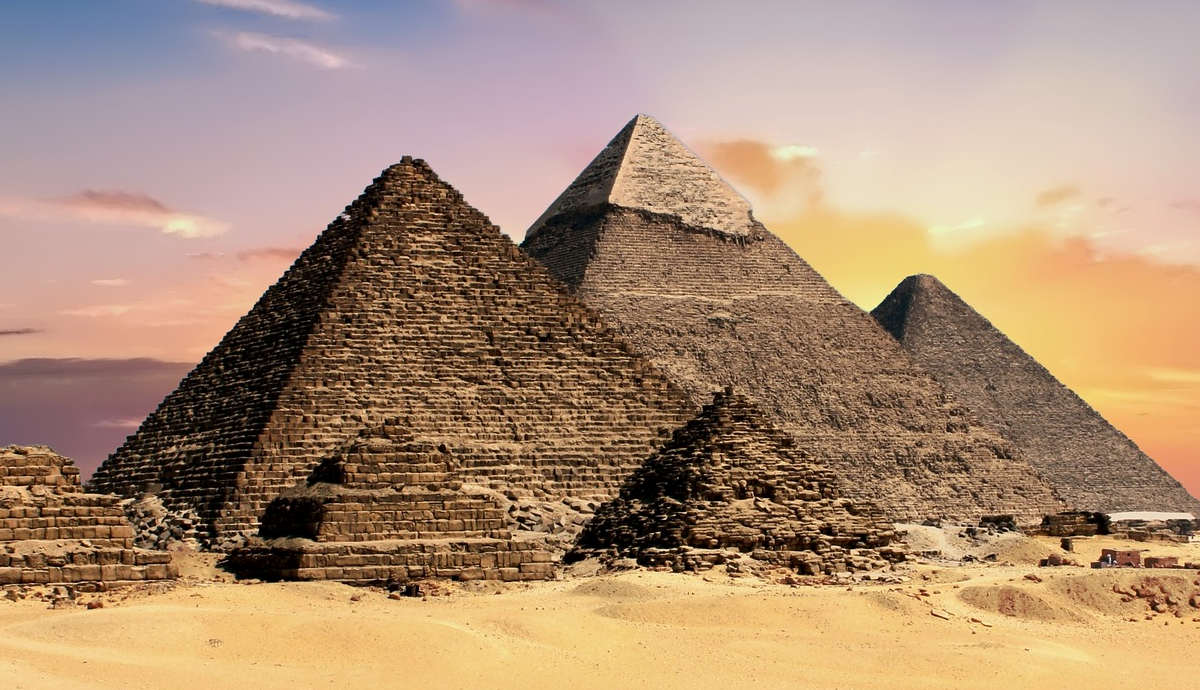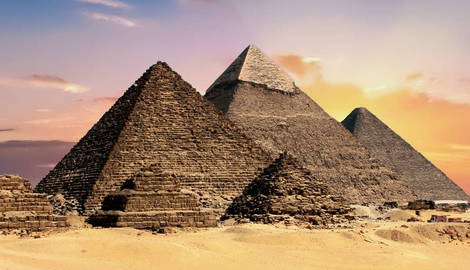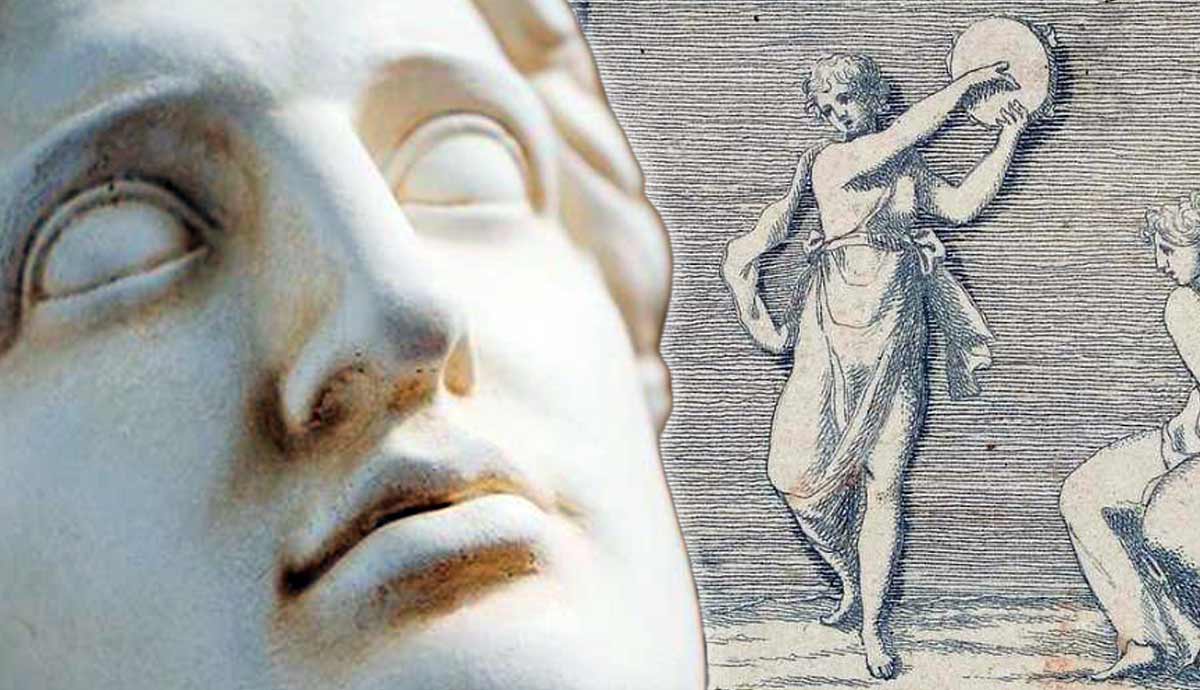
The Great Pyramids of Egypt are among the world’s most fascinating architectural wonders, even though they were built over 4,500 years ago. Giant constructions sitting in the Egyptian desert, both scholars and enthusiasts are curious about how our ancestors managed to build these enormous and complex structures using the technology of the day, and why the ancient Egyptians dedicated so many resources to create these particular monuments. Dive into some of these secrets with 12 surprising facts about the Great Pyramids.
12. The Step Pyramid of Djoser Is the Oldest Egyptian Pyramid

The Step Pyramid of Djoser was the first pyramid built by the Ancient Egyptians and is the earliest large stone monument. Earlier tombs of Egyptian kings were constructed from mud brick. Djoser sourced granite from the far south of Egypt around Aswan and limestone from the other side of the Nile River. His vizier, Imhotep, oversaw construction.
The Aswan granite was used to line the chamber of the tomb walls inside the pyramid. The Step Pyramid’s construction may have been intended to represent a staircase for Djoser to transition from his earthly body to the afterlife.
11. The Red Pyramid Was Egypt’s First True (Smooth-Sided) Pyramid

The pyramids were built for the Pharaohs, to protect their sarcophagi and guide them towards the sun in the afterlife. The Red Pyramid of Sneferu at Dahshur was Ancient Egypt’s first true pyramid, with smooth sides rather than steps. It was designed to resemble the sun’s rays. It is the flattest pyramid of Ancient Egypt, with the gentlest slope, which unfortunately made it easy for robbers to walk along and steal the white limestone that covered the red stone blocks underneath.
It was one of four pyramids built for Sneferu. The Bent Pyramid, also built at Dashur, belonged to Senferu, notable for the sudden change in slope angle around halfway up the construction. It seems that the original angle, 54 degrees, was too steep, and they had to adjust to a 43-degree angle.
10. The Three Giza Pyramids Are Aligned

From the Great Pyramid of the Pharaoh Khufu in the northeast of the Giza necropolis to Khafre’s pyramid, and to the smaller pyramid of Menkaure in the southeast, the southeastern corners of all three structures in the Giza pyramid complex on the West Bank of the Nile are aligned diagonally.
The structures were arranged deliberately so that each of these corners pointed directly to the Temple of Ra at Heliopolis and aligned with the constellation Orion. Pharaohs of the 4th Dynasty believed themselves to be directly descended from Ra. By angling their pyramids on the Giza plateau perfectly, their tombs became a natural part of the daily life cycle of the sun, at the heart of their religion.
The pyramids are guarded by the Great Sphinx, a limestone statue with the head of a man, probably the pharaoh Khafre, and the body of a lion sitting on the rocky plateau.
9. The Pyramids Had a Secret Chamber Where the Deceased’s Soul Rested

Just as important to a pharaoh as the imposing pyramid structure was a secret chamber called a Serdab. A Serdab was close to the pharaoh’s mummy, where his Ka statue, the statue holding the king’s life essence after death, was kept.
Ancient Egyptians believed that if the pharaoh’s mummy was destroyed, his spirit could live on inside the Ka statue. Given the very real threat of tombs being robbed and looted, the Serdab and Ka statue were hugely important to the pharaoh in maintaining a pleasant and peaceful afterlife.
8. The Pyramid Texts Are the Oldest Known Religious Texts in the World

Two hundred years after the Pyramid of Menkaure was built came the Pyramid of King Unas at Saqqara. On the walls of its burial chamber, the “Pyramid Texts” were found – magical spells in hieroglyphic form meant to help King Unas’ soul leave his body and begin its journey to the afterlife.
The oldest known religious texts in the world, the Pyramid Texts have been hugely influential in learning about pharaohs and the roles and responsibilities they had in everyday life. The Unas Pyramid Texts also provide the first reference to Osiris, the god of the Underworld.
7. Climbing the Great Pyramids Is Forbidden

Tourists and Cairo locals attempt to climb to the top of the Great Pyramid of Khufu more often than you might think. Most are arrested or detained on-site before being let go without charge because, under Egyptian law, climbing the Egypt Pyramids of Giza is prohibited but not illegal. In 2016, a 16-year-old German tourist was able to climb the pyramid in just over 8 minutes, while recently, a local threw rocks at authorities and damaged the wooden mast at the top used to measure the Great Pyramid’s height.
6. The Last of the Egyptian Pyramids Was Made from Mud Bricks

The last Royal Pyramid of Egypt was built by King Ahmose I at Abydos, far to the south of the more famous pyramids at Giza, Saqqara, and Dahshur. His pyramid stood around 50 meters high, was part of a traditional large mortuary temple complex, and had very steep sides.
The Ahmose pyramid collapsed into rubble as it was made primarily from mud brick, which couldn’t hold up over time like the gigantic limestone blocks used in pyramids further north.
5. The Pyramids Were Actually White

Casing stones displayed the precision of Egyptian pyramid building. These stones were white, polished limestone caps that covered the stone we see today. They locked together perfectly, giving each pyramid a beautifully flat and smooth appearance. Casing stones reflected the sun like a mirror and shone brightly like burnished jewels. The casing stones are now mostly gone, as they were often stolen, repurposed to build other monuments, or were damaged by seismic activity, such as the massive earthquake that struck Cairo in 1308 CE.
4. A Sultan Attempted to Destroy Menkaure’s Pyramid

During the 12th century, Al-Aziz Uthman, the second Ayyubid Sultan of Egypt and son of Saladin, made an aborted attempt to demolish the Great Pyramids of the Giza complex.
Al-Aziz employed a massive crew of workmen to bring down Menkaure’s temple, but the cost, time, and sheer physical difficulties the pyramid stones and sand presented meant the job was scrapped within a year. The Sultan’s efforts resulted in only a vertical gouge left in the north face of the smallest great pyramid.
3. Professional Construction Teams (Not Slaves) Built the Pyramids

The Great Pyramids were built by workers, not slaves, despite claims by the ancient Greek historian Herodotus in his writings. Entire towns were built alongside the pyramids, where farming families often worked on the pharaoh’s amazing building projects while waiting for crops to grow.
In recent years, archaeologists have found evidence that these towns were populated by professional builders and stonemasons, as indicated by their tools. Worker cemeteries have been excavated close to the Pyramids of Khufu and Khafre and have also been explored in Luxor and the Valley of the Kings.
2. 2.3 million Limestone Blocks Were Used for the Great Pyramid of Khufu

It is believed that in excess of 2.3 million limestone blocks were used in crafting the Great Pyramid of Khufu. Blocks made from granite and placed in the tomb of Khufu came from Aswan in southern Egypt and weighed as much as 50 tons each. The Pyramid took over 23 years to complete, with calculations suggesting that work crews laid an average of 12 stones every hour during that time frame.
Over the project’s lifespan, more than 100,000 people were employed, with a peak workforce of at least 1,000. The original entrance to the Great Pyramid is 17 meters above the ground; however, tourists enter via the “robber’s tunnel,” created in 820 CE when the Sultan of Cairo’s men broke in to find loot. The Great Pyramid attracts as many as 14 million visitors each year and generates almost $9 billion for the economy. It is the only one of the original Seven Wonders of the Ancient World that remains standing.
1. There’s More We Need to Learn

The more we learn about the pyramids, the more questions appear. Despite many theories – ramps and pulleys, water-aided stone sleds, rolling wooden ramps, and massive causeways – there is no concrete evidence explaining exactly how these giant stones were lifted into place and secured.
Researchers have been unable to copy the mortar binding pyramid stones despite understanding what it is made of. Scientists have discovered possible hidden chambers using heat imaging and satellite technology, but so far, they have not figured out what is inside them or their purpose. Much of the Great Egyptian Pyramids remains a mystery for both amateurs and professionals.










